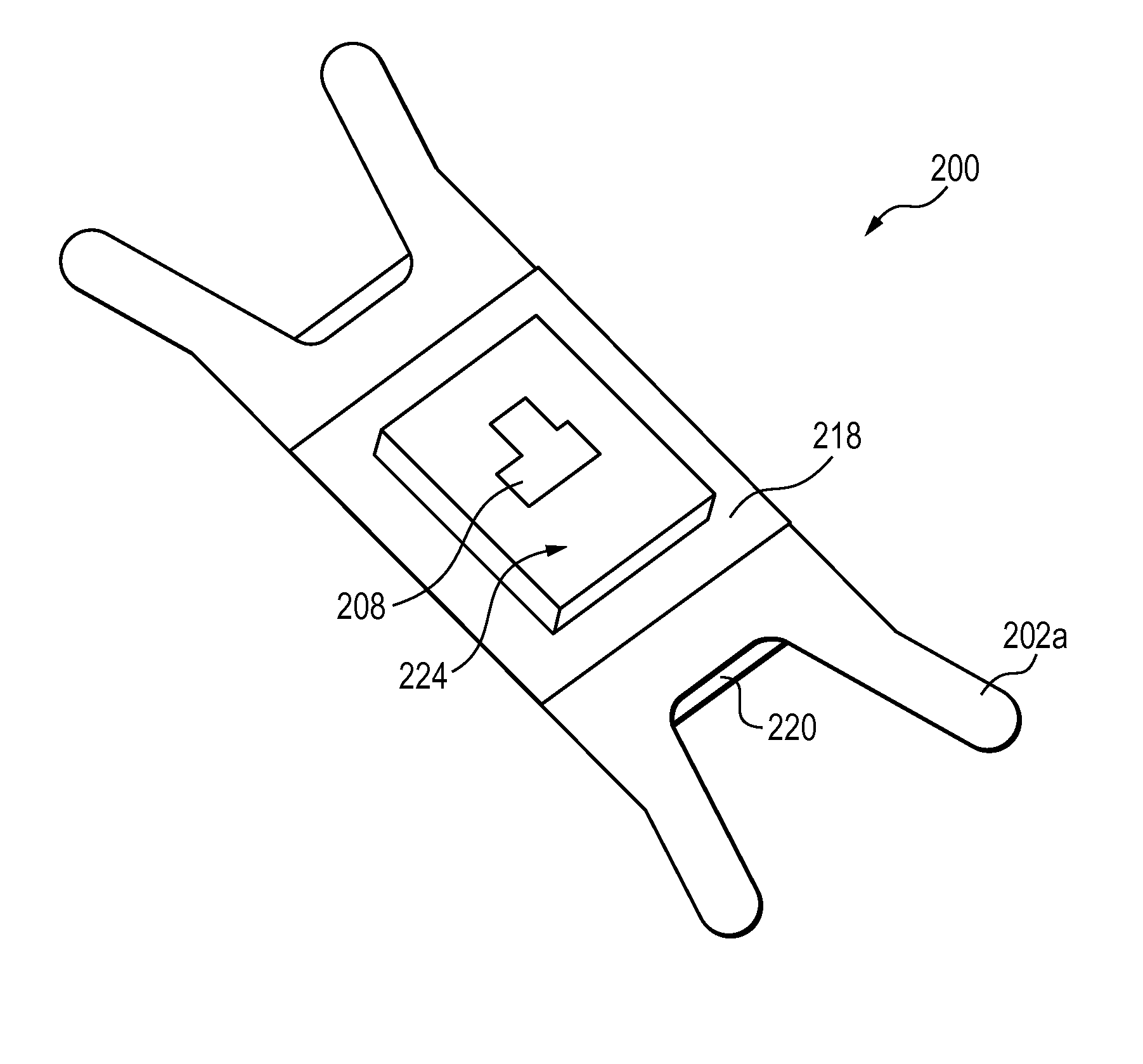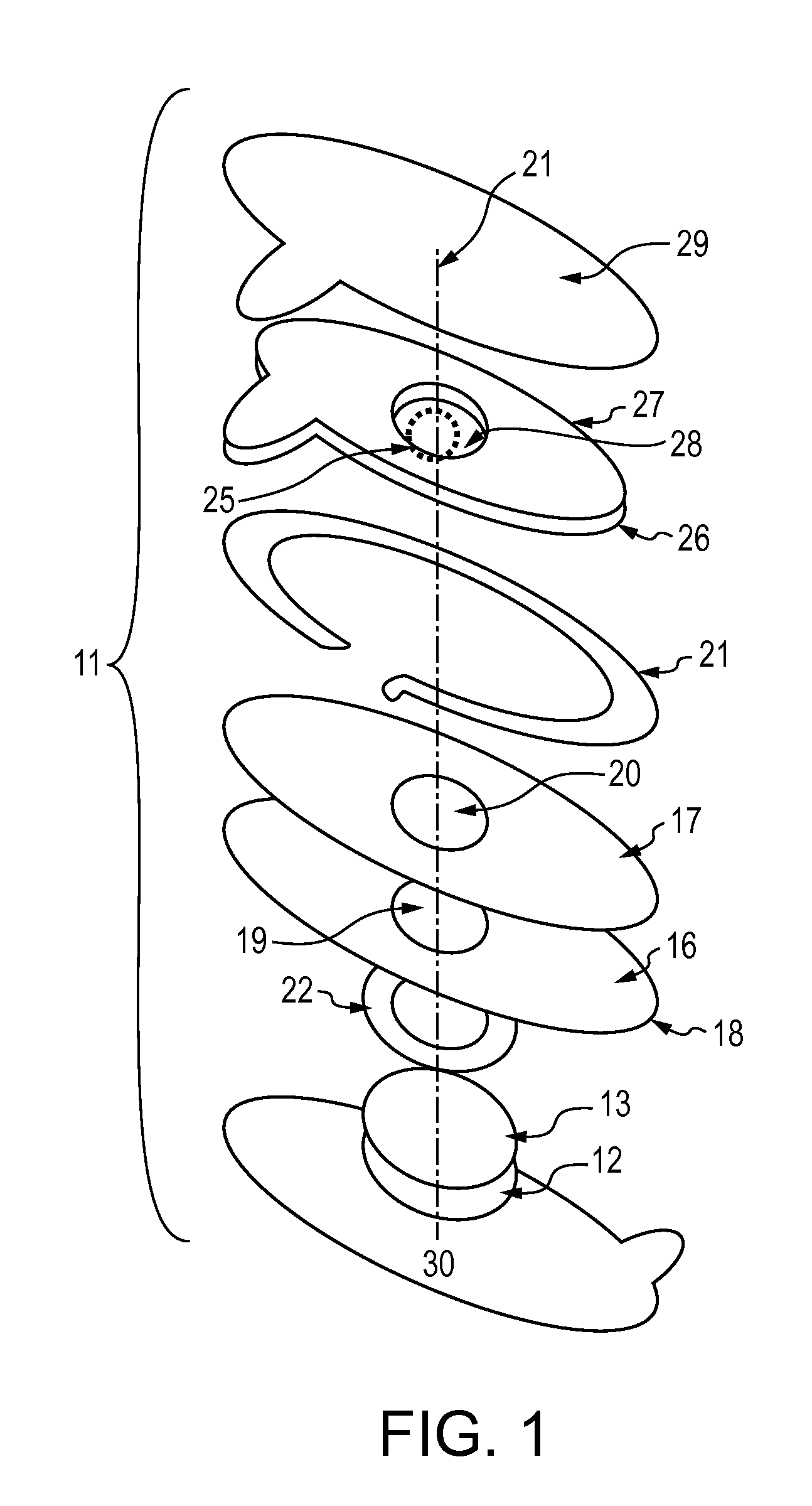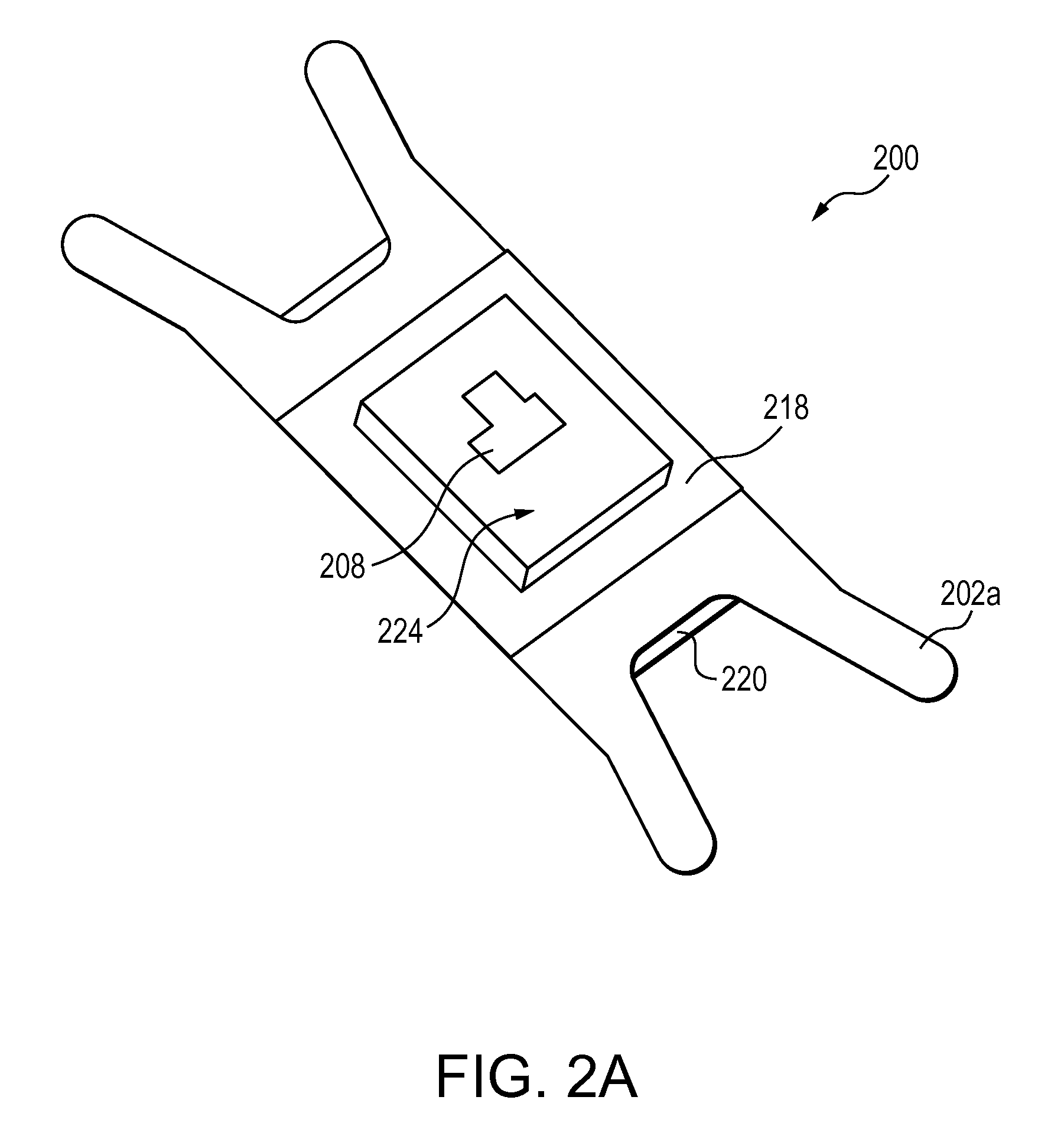Subcutaneous access device and related methods
a subcutaneous access and access device technology, applied in the field of subcutaneous access devices, can solve the problems of affecting the operation efficiency of the peripheral vein, the fragile and limited peripheral vasculature of the patient, and the inability to locate the vein in the critically injured or ill patient, and achieve the effect of facilitating hands-free transillumination of the body portion
- Summary
- Abstract
- Description
- Claims
- Application Information
AI Technical Summary
Benefits of technology
Problems solved by technology
Method used
Image
Examples
Embodiment Construction
[0021]Subcutaneous access devices and methods of the invention facilitate rapid and convenient visualization of and easy and comfortable access to veins, arteries, and other subcutaneous structures within a patient's body. In contrast to conventional methods and apparatus for subcutaneous access, devices of the invention are advantageously portable and capable of efficient use in a variety of environments. Devices of the invention are capable of being simply and efficiently used when providing both routine and critical care in the administration of medical treatment to a patient. In exemplary embodiments, devices and methods of the invention are capably used in the field (e.g., proximate a battlefield) or in temporary battlefield installations (e.g., forward surgical units).
[0022]Devices of the invention are particularly useful in conjunction with and are an improvement to systems and methods described in U.S. Pat. No. 6,230,046 and U.S. Patent Publication No. 2007 / 0032721. Accordin...
PUM
 Login to View More
Login to View More Abstract
Description
Claims
Application Information
 Login to View More
Login to View More - R&D
- Intellectual Property
- Life Sciences
- Materials
- Tech Scout
- Unparalleled Data Quality
- Higher Quality Content
- 60% Fewer Hallucinations
Browse by: Latest US Patents, China's latest patents, Technical Efficacy Thesaurus, Application Domain, Technology Topic, Popular Technical Reports.
© 2025 PatSnap. All rights reserved.Legal|Privacy policy|Modern Slavery Act Transparency Statement|Sitemap|About US| Contact US: help@patsnap.com



